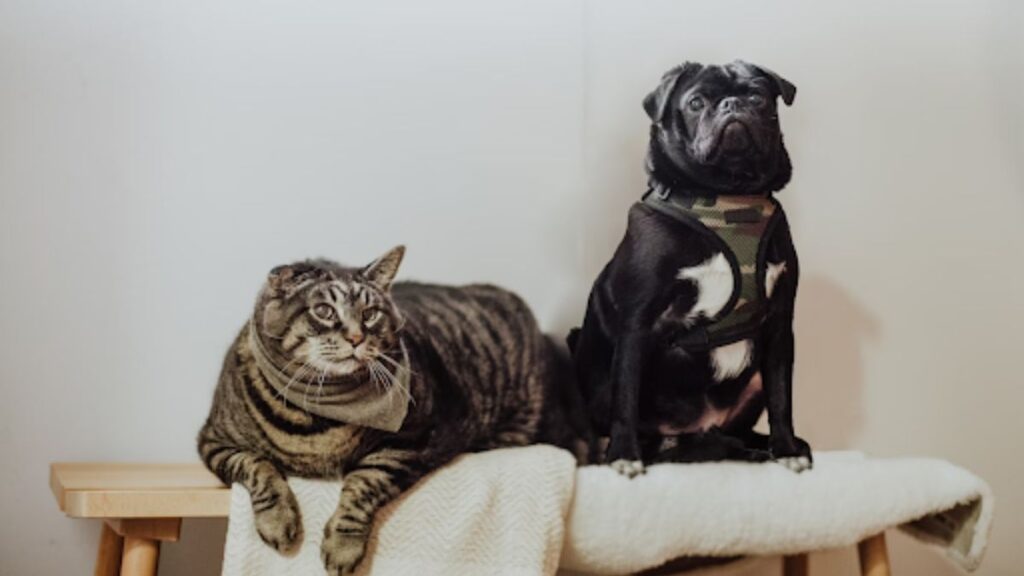Considering pet insurance but finding the numerous options confusing?
You’re not alone!
The UK pet insurance market is projected to hit £1.36 billion by 2025 which is leading more pet owners to protect their pets against sudden veterinary expenses.
Pet insurance policies differ significantly from one another in their coverage details. Accident-only coverage is offered by some policies but there are also policies that provide comprehensive care including dental treatments and behavioral therapy. Pets needing medical attention could result in significant financial burdens depending on your insurance policy.
What You’ll Discover
- Understanding Different Types of Pet Insurance
- Essential Coverage Features to Compare
- Cost Factors That Affect Your Premium
- Reading the Fine Print: Exclusions to Watch For
- How to Choose the Right Plan for Your Pet
Understanding Different Types of Pet Insurance
Pet insurance comes in numerous varieties which provide distinct levels of protection for your pet.
Lifetime Cover
The most thorough pet insurance package available is lifetime cover. The largest segment in the UK pet insurance market is lifetime cover according to market research.
Here’s why pet owners love it:
- Your pet receives continuous coverage for ongoing medical issues during their entire lifetime
- The allowable annual claim amount resets each year to a specific predetermined limit.
- Pet owners receive reassurance knowing that chronic conditions will remain covered under their policies.
The pet insurance provider Purely Pets offers lifetime policies that allow you to claim up to your chosen limit each year, giving you continuous coverage as long as you renew your policy.
Maximum Benefit
Industry projections expect this type of policy will represent 43% of the market share by 2025. It works differently from lifetime cover:
- The policy allows claims up to a predetermined amount for each health condition.
- When your limit is reached for a condition the policy will no longer provide coverage for it.
- Unlike lifetime policies where limits reset annually this policy does not allow for an annual reset of your limit.
Time-Limited
Time-limited policies enable claims for a specified condition for a defined period of up to 12 months while observing a predetermined financial ceiling. The condition becomes excluded once the coverage time ends or you reach the financial limit.
Accident-Only
These insurance policies exclusively cover accidents and injuries without providing any protection against illnesses. These policies provide minimal protection but remain the least expensive choice available.
Essential Coverage Features to Compare
Pet insurance shopping requires more than just premium evaluation. Make sure to evaluate these important features since they can significantly affect your claim process.
Vet Fee Limits
The insurer will only pay up to this specified maximum amount for veterinary treatments. Better protection comes with higher limits but often results in increased premium costs.
Ask yourself:
- What’s the annual limit?
- Is there a per-condition limit?
- Are pet insurance limits renewed each year or permanently set?
Pre-existing Conditions
Your pet’s prior medical conditions remain uncovered under most insurance policies after you begin coverage. Certain insurers provide coverage for historical conditions if treatment has not been needed during specified timeframes.
The definition of “pre-existing” varies between insurers:
- Numerous insurers consider any medical condition identified before policy commencement as pre-existing.
- Some policies categorize pre-existing conditions as symptoms that appeared before the policy start date even if there is no official medical diagnosis.
- Certain insurers offer coverage for historic conditions if they remain untreated during a symptom-free interval.
Age Limits and Restrictions
Pets generally require increased medical attention as they age. Many policies have:
- Upper age limits for new policies
- Higher premiums or excess for older pets
- Co-payment requirements
Cost Factors That Affect Your Premium
Identifying the elements that affect your premium will guide you to decrease insurance expenses while retaining essential protection.
Pet-Related Factors
- Certain breeds have genetic health issues that lead to higher insurance premiums.
- The cost to insure pets increases with their age.
- Your premium is influenced by any past medical problems your pet may have faced.
- Your premium amounts differ depending on your residential location due to regional variations in veterinary expenses.
Policy-Related Factors
- Better insurance coverage results in higher premium costs.
- Choosing a higher excess payment results in a reduction of your premium.
- Increased benefit limits result in increased premium costs.
Market Trends
Industry analysts predict that despite anticipated inflation decreases veterinary costs will stay high which will maintain elevated claims costs. Insurer profitability suffers from this trend which leads to higher premiums for consumers.
Pet veterinary fees have risen at a rate of 4-5% per year throughout the last decade which exceeds general inflation trends.
Reading the Fine Print: Exclusions to Watch For
Your policy’s exclusions section stands as the most critical section to understand. You should know about these frequent policy exclusions.
Waiting Periods
A waiting period exists between purchasing a policy and when its coverage activates. The waiting period usually lasts between 14 to 30 days for illnesses and 48 hours for accidents.
Bilateral Conditions
Some insurance policies exclude coverage for conditions affecting both sides of the body if your pet had the same issue on one side previously.
Breeding and Pregnancy
Standard pet insurance policies generally exclude coverage for expenses related to breeding procedures and pregnancy stages.
Routine and Preventative Treatments
Standard policies typically don’t cover:
- Vaccinations
- Flea and worm treatments
- Grooming
- Microchipping
How to Choose the Right Plan for Your Pet
Picking the optimal pet insurance plan requires more than just looking at the lowest price. Here’s how to make a smart choice:
Assess Your Pet’s Needs
Consider:
- Your pet’s age and breed
- Any breed-specific health risks
- Your financial situation
- Your risk tolerance
A purebred French Bulldog with common breathing problems requires different insurance coverage compared to a mixed-breed cat.
Compare Multiple Providers
Make sure to research multiple quotes before making a decision. The UK pet insurance market has seen steady growth with annual increases averaging 4.3% which has resulted in projected industry revenue of £2.1bn for 2024.
Compare:
- Coverage details and limits
- Exclusions and restrictions
- Customer reviews and claim satisfaction ratings
Look Beyond the Premium
The lowest cost insurance policy may not deliver the best overall value. Consider:
- The excess amount
- Annual price increases
- Multi-pet discounts
Consider Technology Benefits
AI-driven tools for policy customization and real-time claims processing are becoming more common in insurance companies to improve customer experience. Search for companies that utilize technology to simplify and expedite their claims process.
Making Your Decision
Now that you have compared policies you should decide on one. The majority of pet insurance policies in the UK protect cats and dogs yet some policies extend their coverage to horses and rabbits along with other pets.
Ask yourself these final questions:
- Will the policy provide coverage for the conditions which most commonly affect my pet?
- Would I be able to pay both the premium and excess fees in case I make a claim?
- Is the claims process straightforward?
- Does the provider have good customer reviews?
The Bottom Line
Selecting the appropriate pet insurance policy becomes manageable when you understand your pet’s needs and find an affordable policy that meets those requirements.
The optimal moment to acquire pet insurance coverage is during your pet’s youthful and healthy stage. Secure pet insurance coverage before your pet develops a pre-existing condition that results in coverage exclusion.
Your pet offers you unwavering love along with constant companionship. One of the best methods to reciprocate your pet’s love is by securing their health with an appropriate insurance policy.







